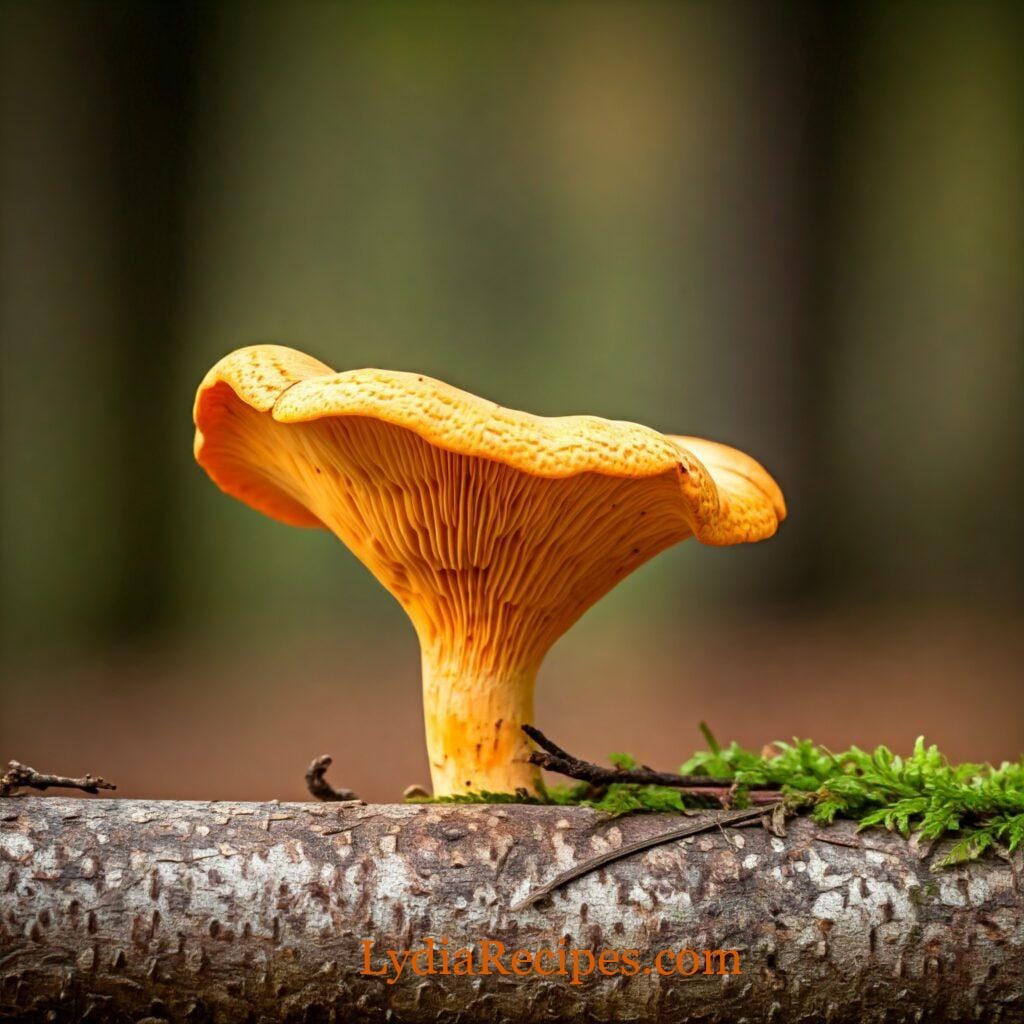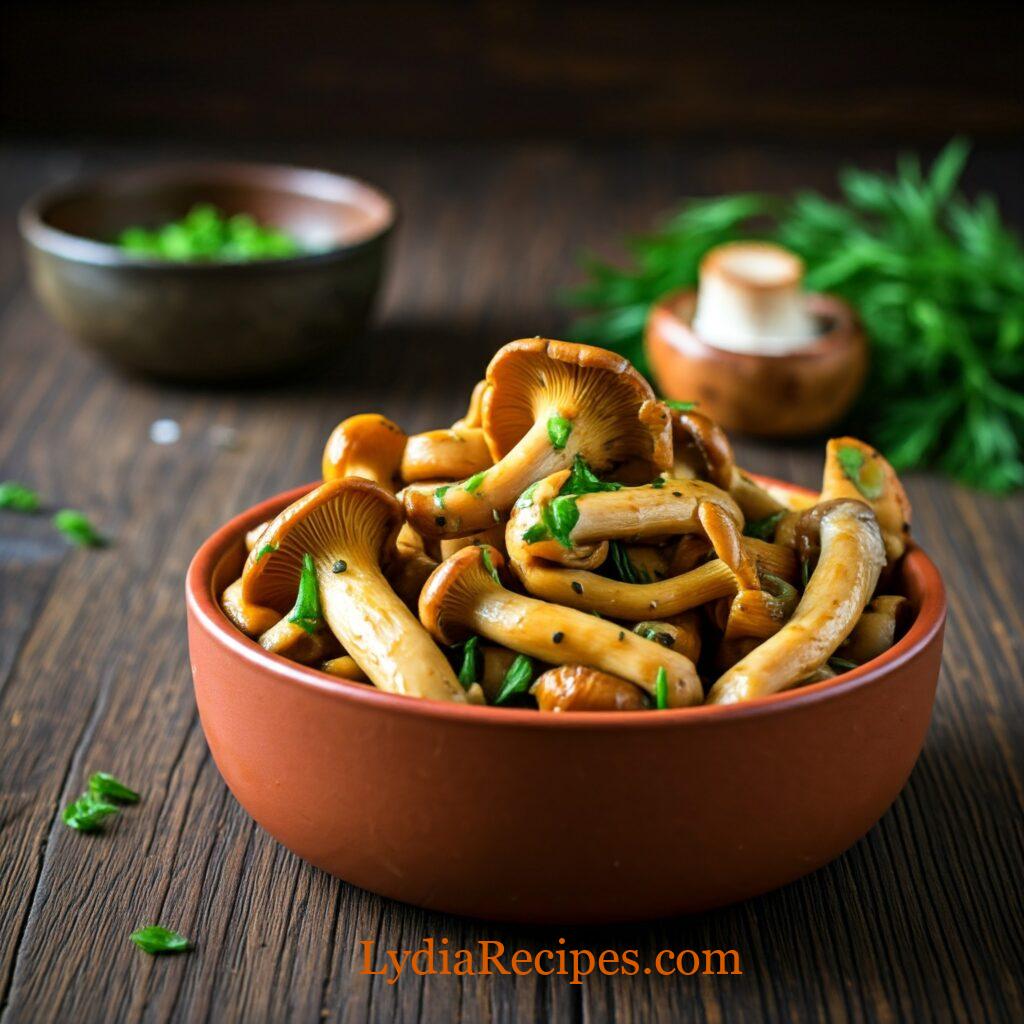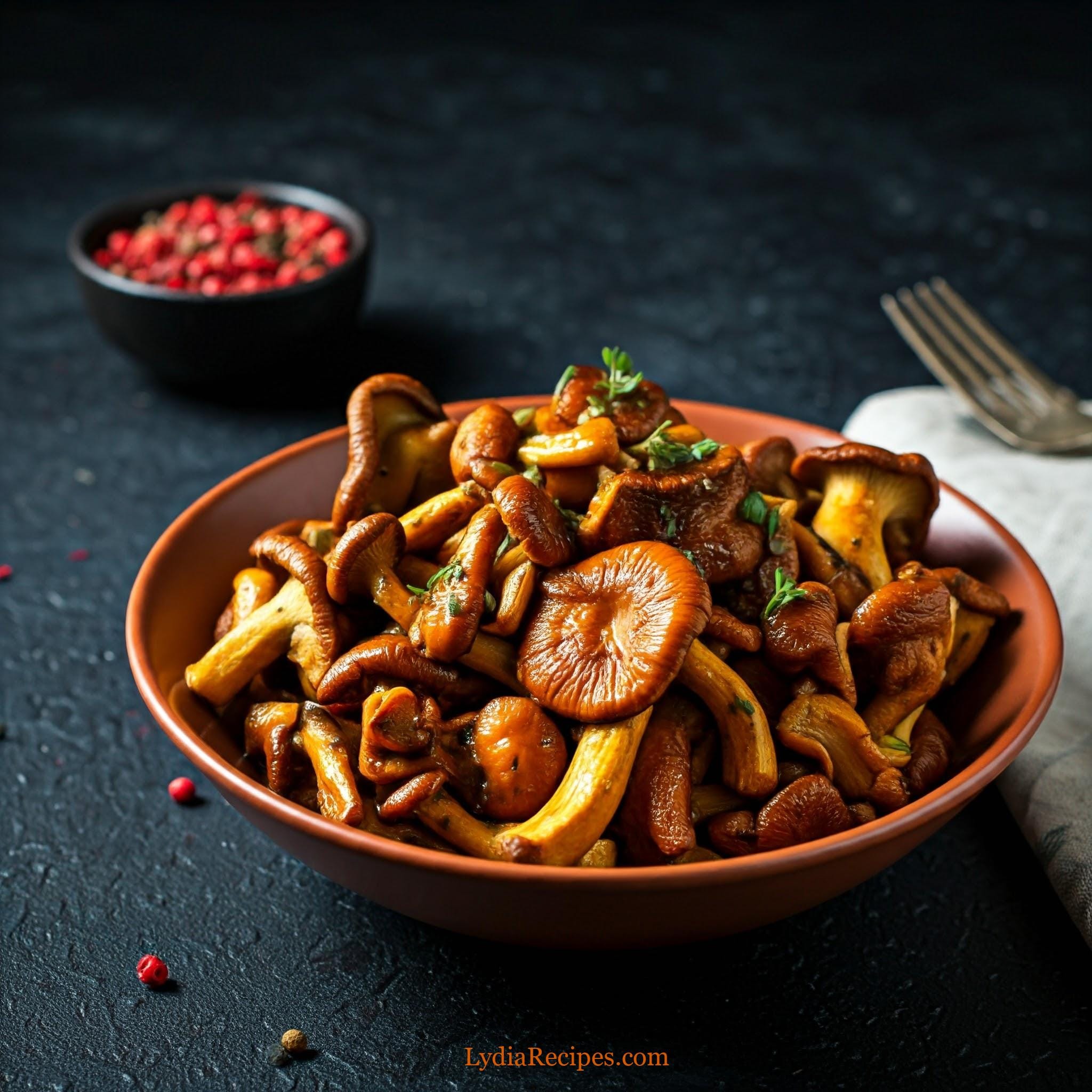Chicken of the Woods (Laetiporus sulfureus) is a flavorful and vibrant wild mushroom gaining popularity among foragers and food lovers. Its bright orange and yellow colors not only make it visually striking but also make its texture and taste closely resemble chicken. In this guide, you’ll learn everything from identifying and foraging to cooking and preparing this wild delicacy. Get ready to embark on a culinary adventure with our Chicken of the Woods recipe!
What Exactly is Chicken of the Woods?
A Brief Overview
Chicken of the Woods, or polypore fungus, grows primarily on oak, cherry, and beech trees. The name Laetiporus sulfureus comes from Latin, with “laetus” meaning bright, “porus” for pore, and “sulfureus” referring to its sulfur-yellow appearance. Its yellow-orange coloration and layered structure easily identify this mushroom.
Nutritional Value
Not only is Chicken of the Woods delicious, but it’s also nutrient-dense, making it a great meat substitute for vegetarians and vegans. It contains:
- Protein
- Potassium
- Vitamin C
- Vitamin D
- Vitamin B complex
- Antioxidants
Foraging for Chicken of the Woods

Identification Tips
Before heading out to forage, it’s essential to correctly identify this mushroom. Key features include:
- Color: Orange to yellow, sometimes with white edges
- Shape: Grows in clusters resembling shelves or fans
- Size: Can range from a few inches to over a foot wide
- Texture: Soft and watery when young, becoming tougher with age
- Habitat: Grows on hardwood trees, especially oak
Where and When to Find Chicken of the Woods
This mushroom typically appears between late spring and early fall, primarily in deciduous forests, especially oak trees. Always follow local foraging regulations and obtain necessary permits when on public land.
Safety Precautions
While Chicken of the Woods is generally safe to eat, certain precautions should be taken:
- Only consume the mushroom if you’re 100% sure of its identification.
- Avoid specimens growing on conifer trees, as they may cause digestive issues.
- Don’t eat mushrooms that are old or discolored.
- First-time consumers should try a small portion to check for potential allergic reactions.
How to Prepare Chicken of the Woods
Cleaning and Storage
Once you’ve foraged or bought Chicken of the Woods, clean and store it properly:
- Gently wipe dirt off with a damp cloth or soft brush.
- Remove any tough or woody sections near the base.
- Cut the mushroom into manageable pieces.
- Store in an airtight container in the fridge for up to one week.
Preservation Methods
If you have more mushrooms than you can use, try these preservation methods:
- Freezing: Slice and blanch, then store in airtight containers.
- Drying: Thinly slice and use a dehydrator or low-temperature oven.
- Pickling: Create a vinegar brine and store it in sterilized jars.
Chicken of the Woods Recipe

Now that you’re familiar with the mushroom, let’s explore a simple and flavorful recipe.
Ingredients
- 1 pound fresh Chicken of the Woods, cleaned and sliced
- 2 tablespoons olive oil
- Two cloves garlic, minced
- 1 small onion, diced
- 1 teaspoon fresh thyme leaves
- ¼ cup white wine
- ½ cup vegetable or chicken broth
- 2 tablespoons butter
- Salt and pepper to taste
- 2 tablespoons fresh parsley, chopped
- Lemon wedges for serving
- Heat olive oil in a large skillet over medium heat.
- Add diced onions and cook until translucent, about 3–4 minutes.
- Stir in minced garlic and cook for another minute.
- Increase heat to medium-high and add sliced Chicken of the Woods. Cook for 5–7 minutes until mushrooms release moisture and begin to brown.
- Add thyme and cook for 1 more minute.
- Pour in white wine and simmer for 2–3 minutes until most liquid evaporates.
- Add broth and simmer until reduced by half.
- Stir in butter until melted.
- Season with salt and pepper to taste, then sprinkle parsley on top.
- Serve with lemon wedges on the side.
Serving Suggestions
- Serve over pasta or rice as a main course.
- Pair as a side dish with grilled meats or fish.
- Use in a gourmet sandwich with a baguette.
- Add to scrambled eggs for a delicious breakfast option.
Adaptations and Variations
Vegan Chicken of the Woods Tacos
Transform your mushroom into vegan tacos by:
- Slicing thin and sautéing with taco seasoning.
- Serve on warm tortillas with salsa, avocado, and lime.
Chicken of the Woods Nuggets
Make vegetarian nuggets by:
- Cutting mushrooms into bite-sized pieces.
- Dipping in plant-based milk and flour, then coating with breadcrumbs.
- Air fry or bake until golden and crispy.
Creamy Chicken of the Woods Pasta
For a rich, creamy pasta:
- Prepare mushrooms as in the main recipe.
- Add heavy cream (or coconut cream for a vegan version).
- Mix with your favorite pasta and top with grated Parmesan.
Health Benefits and Considerations
Potential Health Benefits
Chicken of the Woods offers several health benefits, such as:
- High in protein, making it a great meat substitute.
- Contains antioxidants to fight free radicals.
- Rich in potassium for heart and muscle function.
- B vitamins are essential for energy metabolism.
Precautions and Considerations
While generally safe, consider these points:
- Some individuals may experience digestive issues or allergic reactions.
- Always cook thoroughly before consuming.
- Consult with a health professional if you have concerns.
Frequently Asked Questions (FAQs)
Q1: Is Chicken of the Woods edible?
A1: Yes, as long as it is correctly identified and thoroughly cooked. For beginners, consult with a mycologist or join a local mushroom foraging group.
Q2: How can I tell if Chicken of the Woods is too old to eat?
A2: Younger mushrooms are soft with vibrant colors. Avoid brittle or dry specimens. Opt for those that are bright in color and soft to the touch.
Q3: Can I grow Chicken of the Woods at home?
A3: While possible, it’s challenging due to the complex relationship between the mushroom and its host tree. It’s more commonly foraged or sourced from specialty growers.
Q4: Are there any look-alike species I should be cautious of?
A4: Yes, the Jack-o’-Lantern mushroom (Omphalotus) can be confused with Chicken of the Woods. Always use a reliable guide and consult an expert if unsure.
Q5: Can you eat Chicken of the Woods raw?
A5: No, it’s essential to cook it thoroughly before consuming. Cooking improves taste and texture while eliminating potential toxins.

3 thoughts on “Chicken of the Woods 2024: A Delicious Wild Mushroom Delicacy”